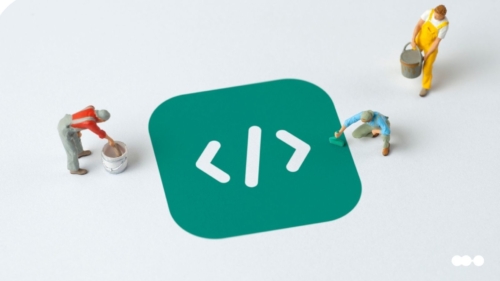ARTICLE SUMMARY
In part two of Pipefy’s low-code webinar series, Guilherme Novaes, Ecosystem Director at IBM Brasil, and Adolfo Chandeck, Strategic Partnerships at Pipefy, bridge the gaps between disparate digital transformation tools and discuss how low-code solutions can complement automation efforts.

Digital transformation won’t be achieved with a single tool. Those working in business operations and technology operations today are inundated with various paths to digital transformation — from RPA to BPA to task and process automation to BPM — each promising to be the solution to their problems.
There are many ways to navigate this digital transformation, but for a true digital overhaul, organizations will need to leverage complementary tools. In part one of the webinar series, speakers from Pipefy and Softbank discussed the true cost and benefits of low-code solutions.
In part two of Pipefy’s low-code webinar series, Guilherme Novaes, Ecosystem Director at IBM Brasil, and Adolfo Chandeck, Strategic Partnerships at Pipefy, bridge the gaps between disparate digital transformation tools and discuss how low-code solutions can complement automation efforts.
Below is a recap of the discussion, lessons learned, a brief history of IBM and Pipefy’s partnership, and forward-thinking tech predictions.
How IBM and Pipefy worked together to scale automation and accelerate digital transformation
In 2021, Pipefy joined IBM’s open innovation program — IBM Open Ventures — to help mature start-ups and scale-ups throughout Brazil.
“When we started the program, we realized that there are certain aspects of the digital transformation that had gaps and there are companies that are really moving forward to link those gaps,” said Novaes. In order to bring the most value to IBM customers, Novaes’ team looked outward for a solution and learned about Pipefy. Once Novaes’ team began to understand Pipefy’s capabilities and its positioning as a low-code automation and process orchestration provider, it became clear how the solution could be leveraged.
“We realized that there were a lot of synergies that could bring different aspects and qualities to the table for our customers” continued Novaes. “We have been very strong in the IT space, but the business side needs things that can be easier, simpler. So when you look at what Pipefy can deliver to our customers, we see a synergy — IBM with IT and Pipefy on the business side. When you connect those dots together, we can propose a broader solution when we can link those dots, guaranteeing that business acceleration won’t slow down due process constraints or due to challenges that IT has every day.”
Through the IBM Open Ventures program, which provides commercial and technical support to the local business ecosystem, the global workflow and business process management startup will be able to offer digital transformation at scale. With the help of Pipefy’s platform, IBM customers are now able to reduce deployment time from months to days and at a lower cost. “Pipefy has the same DNA from a security aspect and the way we deliver solutions,” said Novaes. “We combined different technologies and delivered a full solution to the customer.”
“We augment one another and have a synergy working together,” added Chandeck. “We have our strengths, and IBM has many other strengths in the analytics with AI and machine learning, so we just add to that ecosystem and create a more synergistic offering together.”
Business units need agility. IT needs control. See how no-code delivers both. Read: No-code Automation: Good for Business, Great for IT
Embracing low-code tools: Shift in buy vs. build mentality
Scale. Velocity. Speed. Before March 2020, this was important but it was not at the forefront. After March 2020, it was a matter of prioritizing those elements in order to survive.
“As an IT company, sometimes it takes a long time and huge investments to build something from scratch, inside out,” said Novaes. “So when we combine Pipefy’s BPA with IBM’s automation tools, we start to have a different conversation with customers because it’s no longer about just solving problems.”
“IBM and Pipefy want to be able to give the tools that empower the end user,” said Chandeck. “If you present a platform that allows you to put together applications that create solutions that do not require an extensive knowledge of programming languages, then more empowerment is given to that end user. So then you add to that the functionality that IBM has, and with Pipefy being connected to that, we’re able to build these elegant and wonderful solutions that have tremendous intelligence built into them.”
Why it’s important to skip “band-aid” process solutions
In today’s digital environment, isolated approaches to automation no longer work and neither do band-aid solutions that quickly solve a single problem.
“As the acceleration of transformation has been tremendous in the last years, some companies have built open-source systems that solve problems and those solutions work fine,” said Novaes. “But once you go to an enterprise level and they require more robust adoption and flexibility, it’s a little different.”
With the countless solutions available to users today — from BPA to RPA to BPM and more — companies need to consider a holistic approach, rather than a band-aid solution that solves one problem, to improve efficiency and customer experiences. In order to execute this holistic approach, Chandeck recommends stepping back and looking at what you’re automating and why.
“You want to be able to measure,” Chandeck said. “When you bring in the backbone of BPM and BPA you can look at the systems holistically. You don’t want to automate a bad process. That doesn’t give you good results in the end.”
Digital landscape today: What’s next for automation
Gartner estimates that through 2025, reliance on external consultants will grow as a result of the widening gap between organizational ambitions and internal resources and capabilities. As businesses navigate their digital transformation journey, it requires a number of solutions to both organize and adapt business processes to realize that transformation effort. This begins with companies shifting the use of automation from a quick win to a holistic solution that is mutually beneficial across various teams, such as IT.
“There are rumors and pessimistic ideas about automation, but the reality is totally different,” said Novaes. “What’s happening is that new capabilities and skills are needed, and the combination of humans and AI is becoming more powerful.”
“Today we talk about business process automation, but it’s actually intelligent business process automation,” adds Chandeck. “When processes have the intelligence to then adjust themselves as things change and are able to do more and more without human intervention, we have more pass-through which gives much more efficiency in processing.”
ICYMI: Low-code webinar series recaps and digital transformation insights
Unable to attend previous webinars? Don’t miss out on industry-leading conversations and insights. Check out our previous low-code webinar series recaps to keep informed:
Why Low-Code Is Key to Digital Transformation, featuring guest speaker Carlos Cima, Vice President of Technology at SoftBank Group International
How Accenture Made Low-Code the Backbone of Digital Transformation and Innovation, featuring guest speakers Fabiano Guastella, Digital Innovation Associate Director at Accenture, and Clarison Benteo, Digital Transformation Manager at Accenture
*Some comments and quotes have been edited for clarity.






